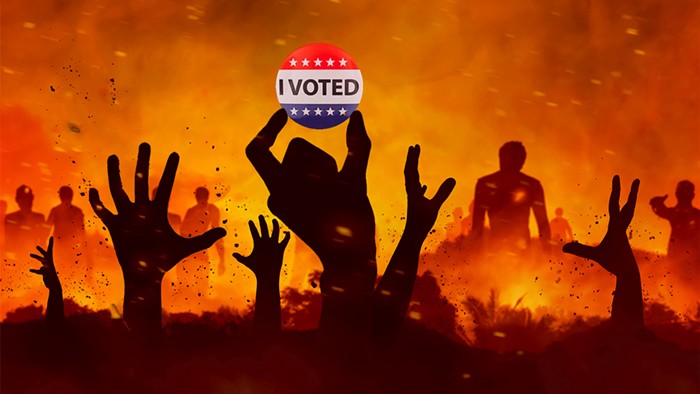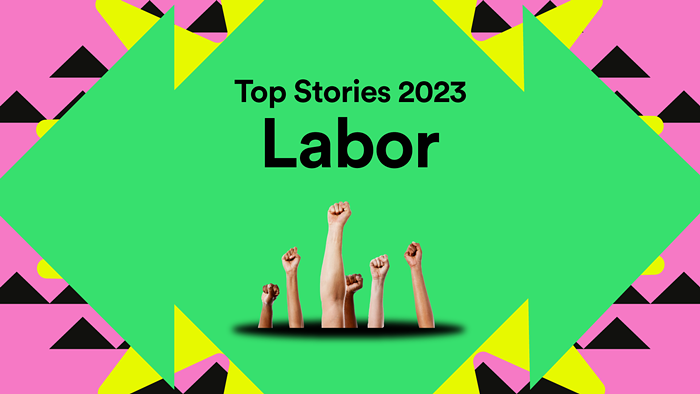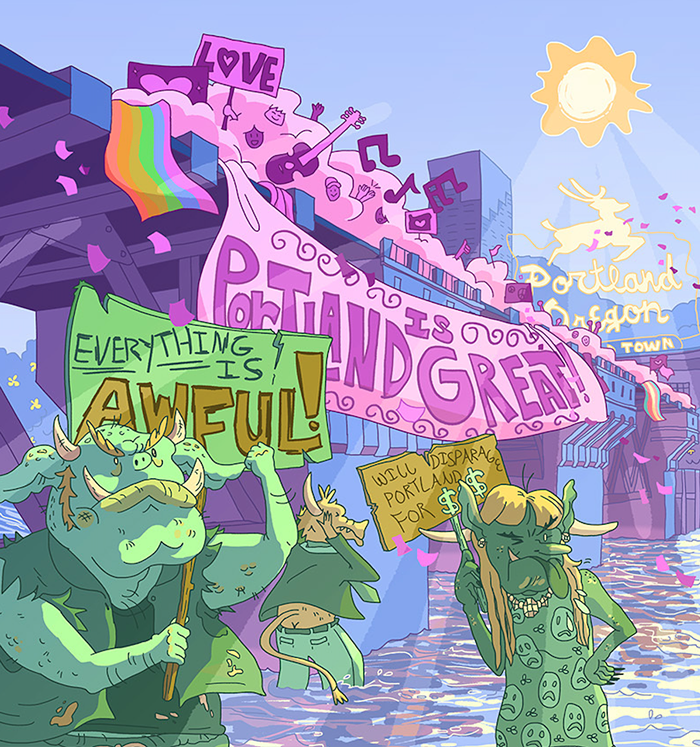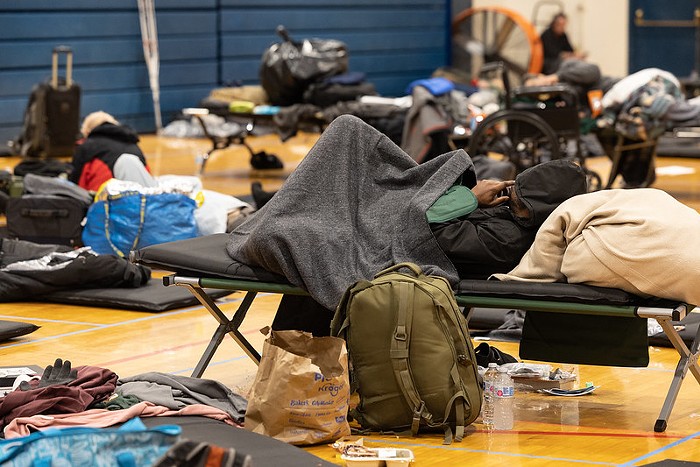DIEGO WAS 23 YEARS OLD, a poor Colombian living in a poor section of Cali, when his girlfriend had the baby.
He was broke—everybody was broke—but his grandmother knew where he could earn some money: He could go work the coca plantations in the hinterlands like she had. She could get him a job working for FARC (Fuerzas Armadas Revolucionarias de Colombia, Colombia's Marxist-Leninist guerrilla army), which was better than working for the right-wing paramilitaries.
Diego is not his real name, and he's currently living in a different Latin American country—otherwise, he said, he wouldn't be talking to me.
SOMETIMES THEY PAY YOU IN LEAD
The Colombian cocaine trade has been tangled up in the country's guerrilla wars for decades: FARC fights the government, the government fights FARC, and the right-wing paramilitaries fight FARC on the government's behalf with an extra measure of savagery. FARC and the paramilitaries constantly jockey for territory—to gain not only political power, but access to rivers, coastal mangrove swamps, and other secret routes where they can smuggle weapons and cocaine to fund their decades-old war.
The paramilitaries, according to Diego and his family, are the worst of the bunch. FARC at least tends to pay its workers, they say. The paramilitaries, on the other hand, have a reputation for stealing coca leaves from farmers at gunpoint and making their cocaine workers labor for months for little or no pay. Sometimes, Diego said, they pay you in lead—a bullet to the brain.
"You can't talk about FARC or the paramilitaries ever, because you don't know who's working for who or who they've recruited," Diego said. "Even people you know are on both sides, so you can't be drunk at a bar and bring up anything—your cousin's girlfriend might be working for the other side. People disappear and get killed all the time. It's very dangerous to talk, to do anything."
But Diego had a family to feed and his grandmother's assurance, so off he went.
MURDERED AT THE DOCK
His grandmother told him to go to Buenaventura, a port city on Colombia's Pacific Coast and one of the most dangerous cities in the western hemisphere. Buenaventura has the highest murder rate in Colombia, the New York Times reported in 2007, and when Diego was there, in 2000, Colombia had the highest murder rate in the world. Buenaventura is "hell on earth," Diego said. With no tourism to speak of, the government has limited incentive (or ability) to crack down on the leftist guerrillas, right-wing paramilitaries, and narcos who walk the streets with their guns out in the open.
Diego remembers getting on a ferry that left Buenaventura at 5 pm. After a several-hour nighttime journey with 70 or 80 other people (plus rice, beans, beer, and other staples bound for the camp), they arrived at a dock. He was then loaded onto a speedboat that, he said, went 90 MPH for seven hours. He had no idea where he was or where they were going—which was the point. The speedboat traveled through swamps and up rivers, stopping only to refuel.
Some of Diego's fellow travelers were laborers, like him. Others were delivering goods (the beans and rice and beer) to the temporary village that serviced the camp—like an old Alaskan gold rush village, except in a tropical jungle patrolled by guerrilla soldiers with machine guns.
When the speedboat finally arrived at the village, it was greeted by guerrillas asking each new arrival for information: Who are you? What job are you here to do? Who told you about the camp?
"You can't just not know anything," Diego said. "Some people died at the entrance because they did not have the right answers, so they got killed right there." Diego saw laborers—who said they'd heard they could board the boat in Buenaventura to make some money—murdered at the dock. This particular camp was known as the Black-Bag Camp, so called because the guerrillas would put a black plastic bag over your head before executing you.
And this was FARC—these were the good guys, according to Diego's family.
NO ONE OUT THERE USED COCAINE
The coca camps move around to make it harder for police to find them. "It's very, very hard to get to them—it cannot be underestimated that guerrillas know the countryside and the police don't," Diego said.
According to Diego, the camp was maybe six football fields big. (We conducted our interviews over Skype, and his current girlfriend—not the one he had when he joined the coca trade—laughed in the background: "That is your measurement for everything!") He was set to work picking coca leaves, which are thick and sharp. The guerrillas don't issue gloves, and Diego was a city boy with soft hands: "It was really funny to everybody else but hard for me," he said. "It was like ripping palm trees apart. You can still see the scars on my hands."
The conditions weren't very good. He'd wake up at 5 am on a dirt floor with 20 other people, every man under his own mosquito net. "After 5 pm, it was just mosquitoes. It was boiling hot, but you had to wear long sleeves and pants, and still a lot of people got yellow fever and dengue fever."
He'd work for three hours, from 5 am to 8 am, filling a 50-kilo (110-pound) sack with coca leaves, and take a break for breakfast. Then he'd be back at it until lunchtime at noon.
"We ate rice and fish and lots of bananas," he said. "Sometimes they had juice. But you had to drink a lot of water, because it was really hot."
They'd pick coca leaves until dark, hoping for rain to cool them down and to make their leaves heavier, meaning they had to pick fewer to fill their sacks. (He typically filled the sack three times in a day—150 kilos total.) Sometimes, when it didn't rain, they'd piss in their sacks to make them heavier.
"Not one person I met out there used cocaine," Diego said. "We would chew on the leaves—to kill the hunger, the fatigue, to stop the pain of the work. Spiders and scorpions, mosquitoes or snakes'd bite you, and you'd chew so you wouldn't feel the pain. Some people believed the coca leaves would stop the poison and save your life."
At his peak earning period, Diego was making the equivalent of $600 per month. "Back then, that was good cash and it was fast," he said. It was incredibly dangerous, too: People would go back home with wads of money, usually to bring to their families, and get robbed and killed along the way, sometimes by the same people they'd been working with in the fields for four or five months. When Diego traveled, he always went with an entourage of uncles or cousins.
MAKING COCAINE STEW
After awhile, Diego graduated from the fields to the "factory," which was more like a shed, where he helped turn the raw leaves into cocaine paste. "Making the paste is gnarly," his girlfriend said. "That's where the real scars come in."
"There's a big pool with all the leaves, a big wood tub," Diego explained. Workers would pour leaves into the tub, stomp them down, and then add gasoline to extract the cocaine alkaloids.
"That's the easiest way for the government to find the camps," Diego said. "Gasoline is expensive, and most farmers don't use that much—sugarcane and bananas are all farmed by hand—so you find whoever's buying vats and vats of gasoline."
They'd lay a tarp over the tub for 24 hours, with someone stirring the gasoline-coca stew every four or five hours. Then they'd taste the brew to see if it was strong enough. If it numbed the tongue, it was good. If not, it needed more chemicals. Diego doesn't remember exactly which chemicals they used: "There were a lot of chemicals." Eventually, they'd pull the plug on the tubs, collect the cocainized gasoline, add ammonia and sulfuric acid, and chemically reduce the brew into a paste that was taken elsewhere to be turned into cocaine hydrochloride—powder.
Diego and the other workers were encouraged to spit into the tubs holding gas and coca, and even pass spit-mugs around the camp, under the premise that saliva helped the extraction process. Workers were also encouraged to ash their cigarettes into the vats, perhaps because traditional coca chewers sometimes added a dab of quicklime or the ash of burned quinoa plants to their wad of coca. (Diego said he wasn't sure why.)
Then there were the unauthorized additives. "Sometimes we'd piss or shit in the vats, just to be fuckers," Diego said. "Only the rich use cocaine, and we thought it was funny."
THEY WERE SHOT—TO PROVE A POINT
The territory where Diego was working—he still isn't 100 percent sure where they were—was a death zone. The paramilitaries and guerrillas were fighting upriver, and he said that sometimes when he went to fetch water, he'd see dead bodies or severed limbs floating past.
"I often heard people say things like, 'Yesterday I saw four bodies going down,'" Diego said. "All the time, people were talking about bodies. A lot of times they were tied together, big groups of people."
Stories circulated from the guerrillas to the workers about small bands of soldiers who "went to make some business away from the group" and were savaged by larger groups of paramilitaries: "First they cut their hands off, then they cut their legs, and then they'd kill them." The threat of infighting and defection was constant, as workers felt the tempting urge to abscond with packages of paste and sell them on their own.
Then, of course, there was the guerrilla war. In nearby villages, guerrillas and paramilitaries enforced curfews, telling villagers to "go to bed early, because if we see anyone walking around after 10 pm, we'll kill them." They also went from village to village, Diego said, conscripting boys for their armies, sometimes leaving notes under people's doors ordering them to bring their sons to the town center (the church, the plaza) at a certain time. If anyone refused, the soldiers might return to murder the entire family.
One weekend, Diego and some of the workers had a Sunday off, so they went to the little village that serviced the camp to drink beer, loaf around, and look at the women. (Most of the women in the camps, he said, were either cooks or prostitutes, some of them very young local girls.) "We were playing billiards and chess, and all of a sudden people got really quiet. Then people freaked out and were running because the paramilitaries showed up."
The paramilitaries forced everybody inside a classroom, then said that government soldiers were on their way and not to tell the guerrillas.
"A lot of people were shot," he said. "Then they left. That was it—people were shot because the paramilitaries wanted to show something or prove something, to make a point."
LEAVING THE COCAINE KINGDOM
During his time working in the cocaine kingdom—several months-long shifts—Diego saw a parade of corpses, guns, bags of cocaine paste, and barrels full of US dollars that mysteriously appeared and disappeared. One of his cousins and some of his uncles were killed. (He declined to say how or why.) The breaking point came one day when he went to get drinking water, saw yet another corpse floating past, and snapped. "And I was like, 'Oh my God, I can't do this anymore. No, no, no, no, this is not the kind of life I want for me.'"
Diego left the trade and eventually the country. As of our last conversation—we had multiple hours-long conversations over two months—he does not intend to return. At one point, he called his family to clarify a few details he couldn't remember. A few days later, he said his family was very upset that he'd been talking to me and upset that he'd asked them about the trade, and that he couldn't talk to me anymore.
That was the last I heard from him.













